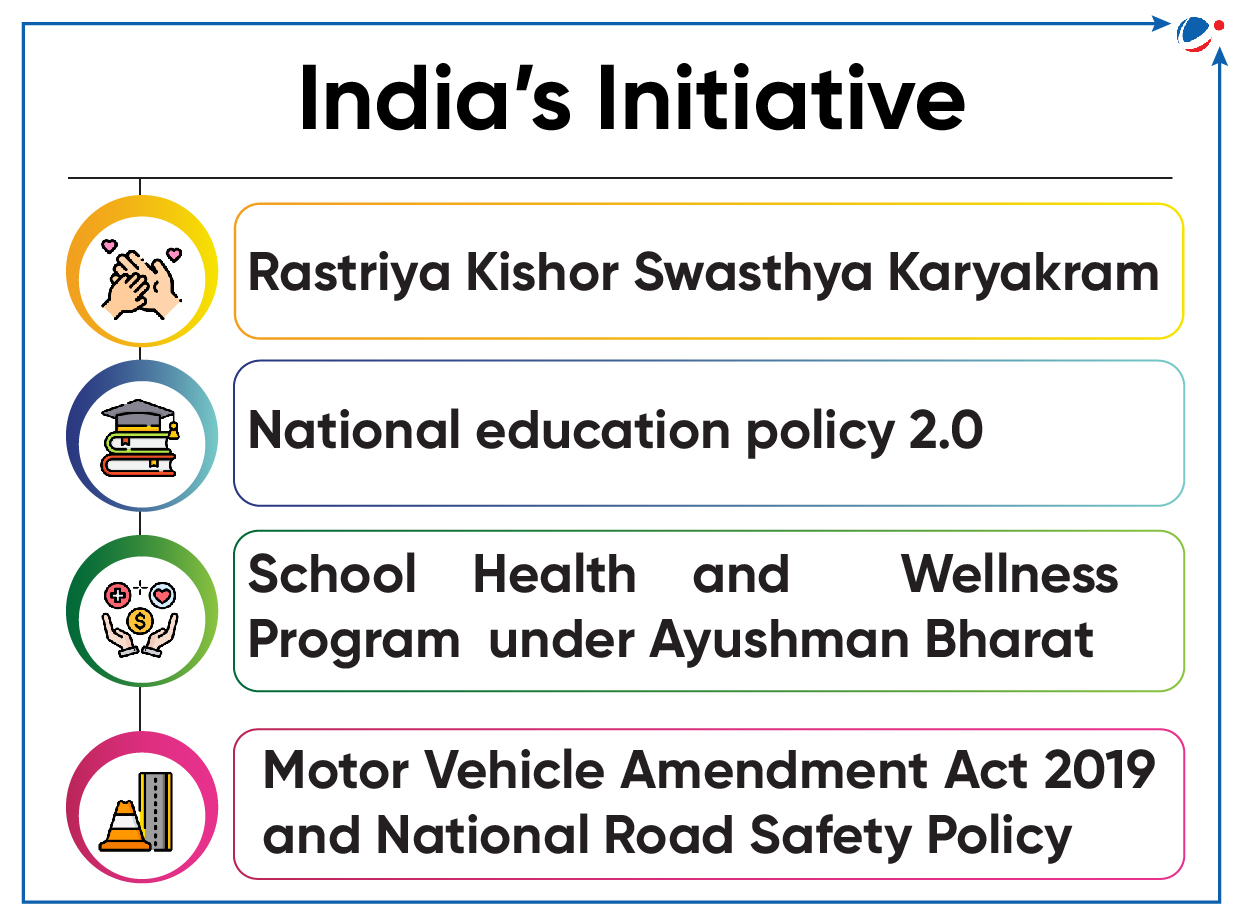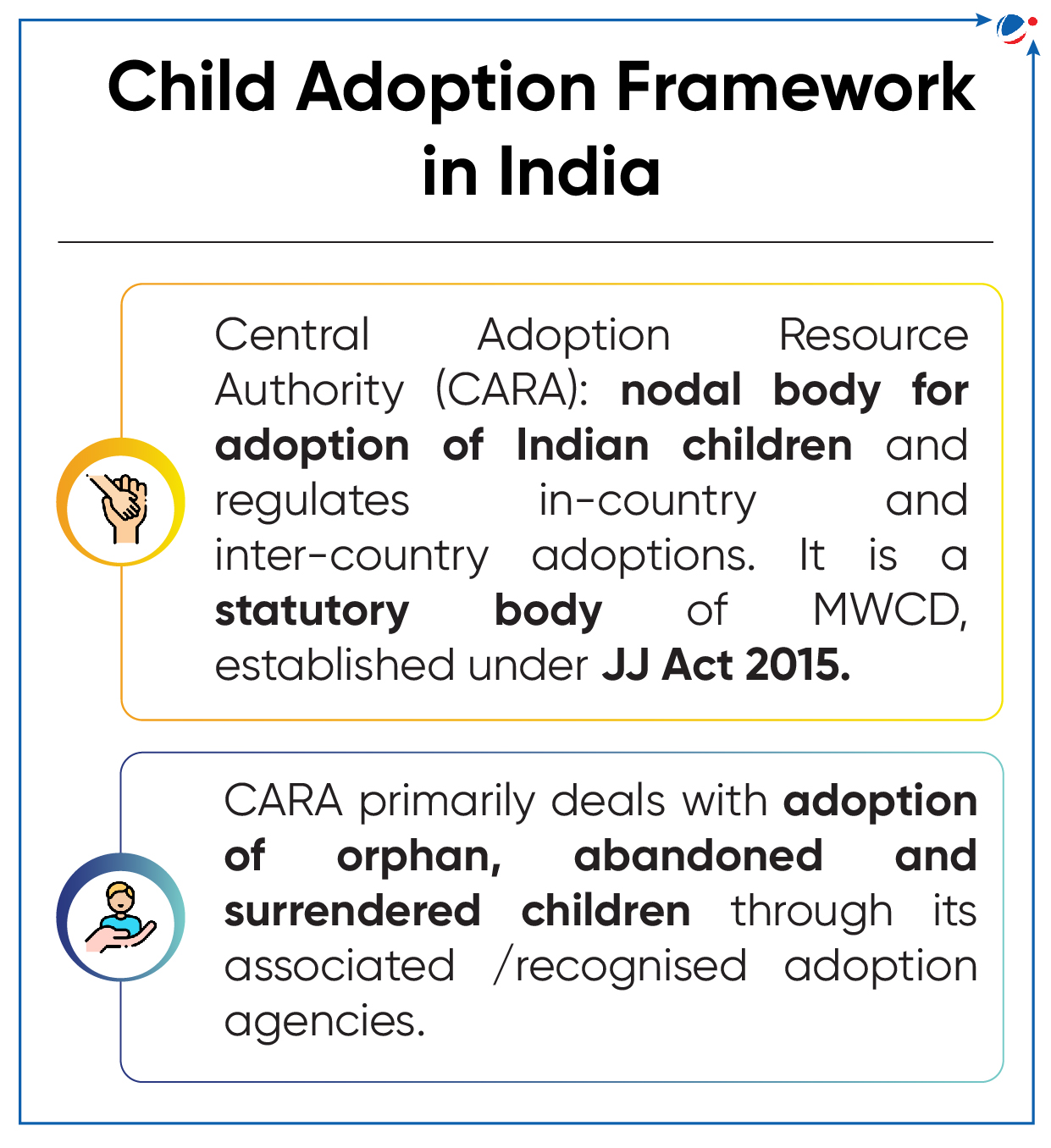NIRF Ranking 2024
Ministry of Education released the 9th edition of National Institutional Ranking Framework (NIRF) 2024.
About NIRF
- Launched in 2015
- It outlines a methodology to rank educational institutions across the country.
- Five parameters: Teaching, Learning and Resources, Research and Professional Practices, Graduation Outcomes, Outreach and Inclusivity, and Perception.
- Implementing Agency: National Board of Accreditation (NBA) in collaboration with the INFLIBNET Centre in Gandhinagar
- New addition for ranking: Open Universities, State Public Universities and Skill Universities.
- IIT Madras is best education institution in country for sixth time(Since 2019), followed by IISC Bangalore.
- Tags :
- Ministry of Education
- NIRF Ranking 2024
Adolescents in India
“Economic Case for Investment in the Well-being of Adolescents in India” Report released by Ministry of Health & family welfare.
- The report provides insights into interventions where investments on adolescents will yield high returns.
Key Highlights
- India has largest adolescents (aged 10-19) population (253 million) in world.
- Adolescent mortality rate fell by >50% & adolescent fertility rate declined by 83% (2000-2019).
- Young people completing secondary school has more than doubled from 22% (2005) to >50% (2020).
- 22.7% rise in fatal road accidents for adolescents under 18 has been observed (2021- 2022).
- Suggested Interventions are expected to boost Indian economy by 10.1% of annual GDP.

Issues faced by Adolescents
- Health: Unplanned pregnancies, malnutrition, mental disorders (depression and anxiety).
- Education and Employment: Stagnant learning, Unemployment (due to emerging technologies e.g. AI).
- Child marriage: Although, girls getting married before 18 has declined by over half (2006-2024), 1 in 3 of world’s child bride live in India.
- Violence and injury: Prevalence of road accidents, self-harm & suicide.
Interventions required
- Schools in underserved areas, improved pedagogy, and merit based scholarships for better learning outcomes
- Prevention of cyber bullying, interpersonal violence and prevention and treatment of common mental disorders for improved adolescent health.
- Impart life skills and transfer payments to girls, changes in cultural and social norms to curb child marriage
- Graduated licensed schemes to curb injury to adolescents.
- Tags :
- Adolescents in India
- Ministry of Health & family welfare
Articles Sources
Model Foster Care Guidelines, 2024
Ministry of Women and Child Development released Model Foster Care Guidelines (MFCG), 2024
- These guidelines are in succession of MFCG 2016 and are based on provisions in Juvenile Justice (Care and Protection of Children) (JJ) Act, 2015 and JJ Model Rules, 2016, Adoption Regulations, 2022 and Mission Vatsalya Scheme.
- Foster care is the placement of a child in the domestic environment of a family, other than the child’s biological family.
- Such family is selected and approved by the Child Welfare Committee for providing foster care.

Key provisions in Revised Guidelines
- Children eligible for foster care: Children above 6 years age living in childcare institutions or community including hard-to-place children, children having special needs and children having unfit guardians.
- Eligibility to Foster: Any person, irrespective of marital status, and whether or not they have a biological son/daughter to foster a child. (Only married couple were eligible under MFCG 2016).
- Allows single females to foster and adopt a child of any gender, however, single males can only do so for male children.
- Spouse/couple shall have a stable marital relationship of 2 years.
- Foster Adoption: Allows the foster parent, who is already fostering the child for minimum 2 years (as opposed to 5 years earlier), to adopt the same child.
- Tags :
- Ministry of Women and Child Development
- Foster Care
- Model Foster Care Guidelines, 2024
Bagless Days
Union Ministry of Education announced guidelines for implementation of bagless days for students of Classes 6 to 8.
- Previously, National Education Policy 2020 recommended that all students will participate in a 10-day bagless period sometime during Grades 6-8 where they intern with local vocational experts such as carpenters, gardeners, potters, artists, etc.
About Guidelines
- Objectives: To build observation-based learning capacity, develop understanding of connectedness of community and interdependence, to promote dignity of labour through hands on activity, etc.
- Activities covered: Visit and survey of vegetable markets, charity visits, survey and report writing on pet care, doodling, etc.
- Tags :
- Bagless Days
- National Education Policy 2020
Habitat Rights for Juanga Tribe
District Level Committee approved Habitat Rights for Juangs of Keonjhar, a PVTG in Odisha.
- Other tribes such as Jaungs of Jajpur, Paudi Bhuyans of Deogarh in odisha and Bharia PVTG in Madhya Pradesh and Kamar PVTG and Baiga PVTG in Chhattisgarh have habitat rights.
Habitat Rights
- It was introduced under the Scheduled Tribes and Other Traditional Forest Dwellers (Recognition of Forest Rights) Act, 2006 also known as the Forest Rights Act (FRA).
- FRA defines ‘habitat’ as the ‘area comprising the customary habitat and such other habitats in reserved and protected forests of primitive tribal groups and pre-agricultural communities, and other forest dwelling STs’.
- Habitat Rights are accorded after a sequence of consultation with the community members, traditional leaders, women leaders, district and forest administration, etc.
- Significance for PVTGs: Concerned rights over their customary territory of habitation, socio-cultural practices, intellectual knowledge, traditional knowledge, and conservation of their natural and cultural heritage.
About PVTGs
- Government has recognised 75 PVTGs spread across 18 states and one UT based on the recommendations of the Dhebar Committee (1960-61).
- Odisha houses 13 PVTGs-highest among all the states and UT
- The criteria for identifying PVTG are: Pre-agricultural level of technology, low level of literacy, Economic backwardness, and declining or stagnant population.
Juang Tribe, Odisha
|
- Tags :
- PVTG
- Juanga Tribe
- Forest Rights Act (FRA)




